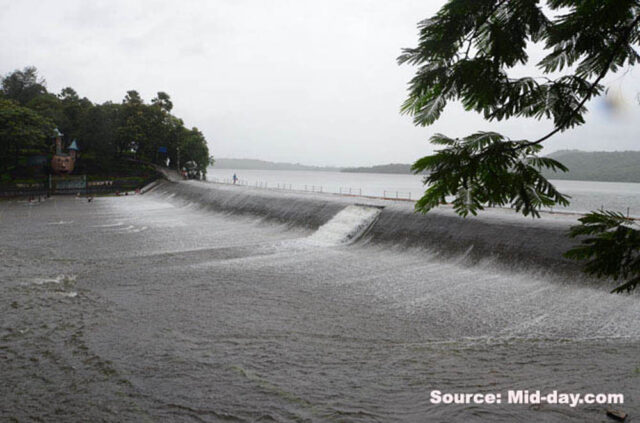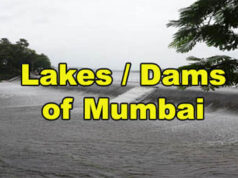Mumbai one of the most populous city of the world quenches it’s thirst from 7 lakes/dams which supply fresh water. The 4 dams situated in the outskirts of Mumbai. These 4 dams are Vaitarna, Tansa, Bhatsa and Modak Sagar.
The other three 3 lakes are located in Mumbai itself. All the three lakes in Mumbai were formed as a result of Government’s initiative to store and control rainwater flowing from the Mithi river catchment.
- The largest one is the ‘Vihar Lake’, stretching about 27 miles and is located near the ‘Sanjay Gandhi National Park’.
- The second largest lake is Tulsi Lake in Mumbai. Water from the Tulsi Lake is extremely fresh and is used as drinking water.
- The artificial lake that was built by the British in 1890 is Powai Lake. It is located near the Indian Institute of Technology (IIT) and considered as an important tourist spot.
The BMC supplies 3,850 million litres per day (MLD), against a demand of 4,200 MLD. The seven lakes are bifurcated into two systems: the Vaitarna system, which supplies to the western suburbs and the island city, and the Bhatsa system which supplies water to the eastern suburbs.
|
Year of Construction |
Lakes/Dams |
River |
Capacity in Million Litres (ML) |
|
1860 |
Vihar Lake |
Mithi |
11159 |
|
1879 |
Tulsi Lake |
MIthi |
8046 |
|
1891 |
Powai Lake |
MIthi |
– |
|
1892 |
Tansa Dam |
Tansa |
145080 |
|
1957 |
Upper Vaitarna |
Vaitarna |
227047 |
Read – Update on water levels in various lakes and dams of Mumbai
Vihar Lake
Powai Lake
Tulsi Lake
Modak Sagar
Upper Vaitarna
Bhatsa Lake
Tansa Lake
It is situated near Vihar village on the banks of Mithi River, within Borivali National Park. Due to protest of water shortage by local people in 1850, Captain Crawford submitted a report favouring the Vihar Scheme for the Mumbai city’s water supply needs.
The construction of Vihar lake was commenced in January 1856 and was completed in 1860,
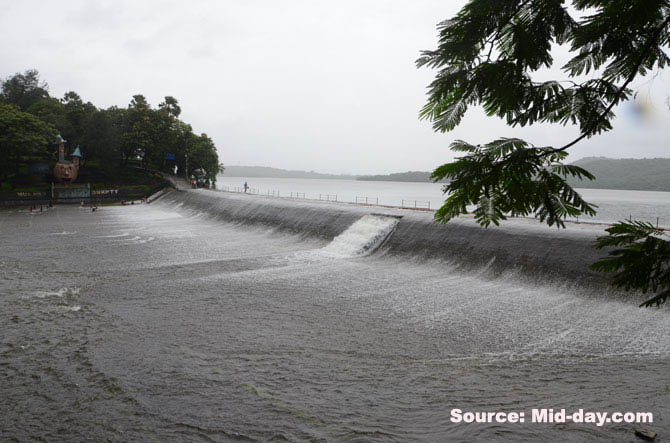
The filtration of the water of this lake is done at Bhandup. It is a big filtration plant useful for a large population of Mumbai to meet the drinking needs. The stretch of water extends up to 27 miles from the center of Mumbai. The collection of the water in the lakes is mostly during the rainy season in the catchment area of Powai-Kanheri Hill Ranges.
Features:
- Entry to the public restricted since 1995
- Fresh water crocodiles, known as ‘Marsh crocodiles’, are found in this lake in large numbers. A crocodile park, with caged crocodiles of various sizes and species, has also been setup in the lake area.
- IIT Bombay is located on the southern part of the lake.
Location: Near Vihar village on the banks of Mithi River, within Borivali National Park (also known as Sanjay Gandhi National Park); about 30 km from CST.
Famous For: Migratory birds, composed surroundings; Mumbai’s largest lake.
Nearby Tourist Attractions: Sanjay Gandhi National Park
How to Reach: Vihar Lake is easily accessible to the people and anyone can reach there by boarding a bus, train, or by hiring auto or taxi.
Powai Lake is an artificial lake situated next to the Powai village. A huge lake in a totally residential suburb of Mumbai. Completely untouched by construction activity. Powai lake is a good place to hang out, walk, or just sit and watch the activities around. To the east of this lake is the esteemed Indian Institute of Technology (IIT Mumbai). There are also various luxurious hotels and housing complexes around the periphery of the lake.
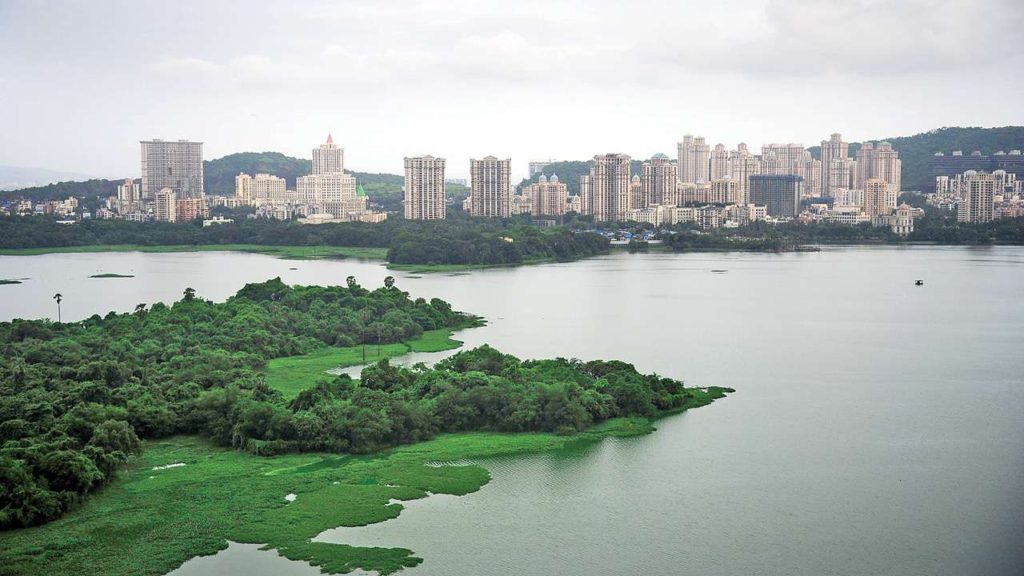
It’s Construction:
In 1891, the lake was constructed by British authorities by building two dams across the Mithi River to meet the drinking water requirement of the people. The lake was then spread across 2.1 km2, having a depth of approximately 3m at the periphery and 12m at its deepest end.
How To Reach
If you are traveling by road, the lake is situated at a distance of 8.5 km from Andheri, 5.2 km from Kanjurmarg.
Railway
Get down at Kanjur Marg railway station on central railway. It is the nearest railway station to Powai Lake.
(TOP)
After Vihar lake, Tulsi Lake is the second largest lake in the city of Mumbai. It is a fresh water lake, located within the premises of Sanjay Gandhi National Park and near to Vihar lake.
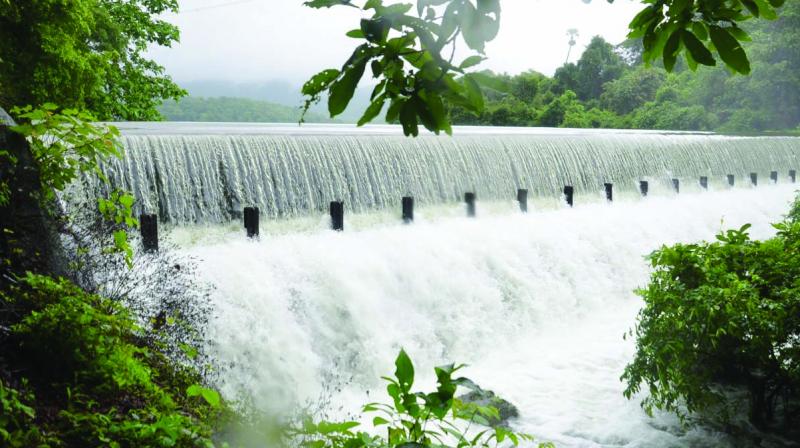
Tulsi Lake gets rainwater from a catchment area of about 676 hectares of Powai-Kanheri hill ranges. This lake was built by constructing a dam across River Tasso. During monsoons, the water from Tulsi Lake flows out into the Powai Lake leading down into the Mithi River.
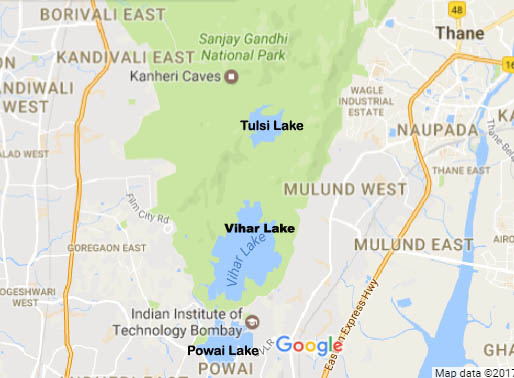
It was built as an option for the extension of Vihar Lake and for controlling the water of Tasso River. The idea of building the Tulsi Lake began in 1872 A.D and the construction was completed in 1897 A.D. It has a total surface area of 1.35 km (135 hectares) with an average depth of 12m. The mean depth of the lake is 12m and the catchment area approximately ranges to 6.76 km. It comprises of gross storage of 2,294 million imperial gallons of water at full supply level from which approximately 4 million imperial gallons per day are supplied to Mumbai city. The majority of water requirements of the southern part of Mumbai are met using the fresh water supply of this lake.
Entry for the common public is restricted.
MODAK SAGARModak Sagar is a lake located in Thane district on the Vaitarna River. It has an overflow level of 163.15 meters, making it the second largest of the lakes supplying water to the city of Mumbai
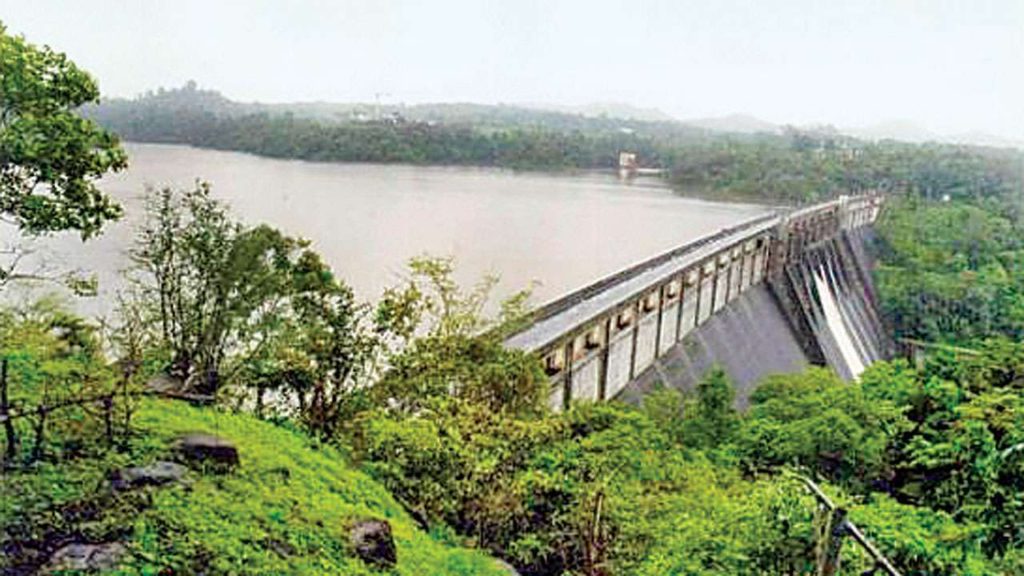
The Dam premises are protected by the state government. Access is only for officials from the BMC.
UPPER VAITARNAUpper Vaitarana Dam, is an earth fill and gravity dam on west-flowing Vaitarna river near Igatpuri, Nashik district of Maharashtra state in India. The reservoir created by this dam spreads on both Vaitarna and Godavari rivers catchment area.
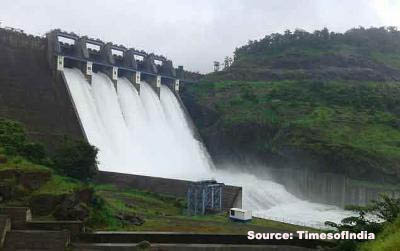
Bhatsa dam is an earth fill and gravity dam on the Bhatsa river near Shahapur, Thane district in the state of Maharashtra in India.
The height of the dam above the lowest foundation is 88.5 m (290 ft) while the length is 959 m (3,146 ft). The volume content is 18,250 km3 (4,380 cu mi) and gross storage capacity is 976,150.00 km3 (234,190.84 cu mi)
TANSA LAKETansa dam is an earth fill and gravity dam on the Tansa river near Mumbai, Thane district in the state of Maharashtra. The dam is one of the sources of drinking water in the city of Mumbai.
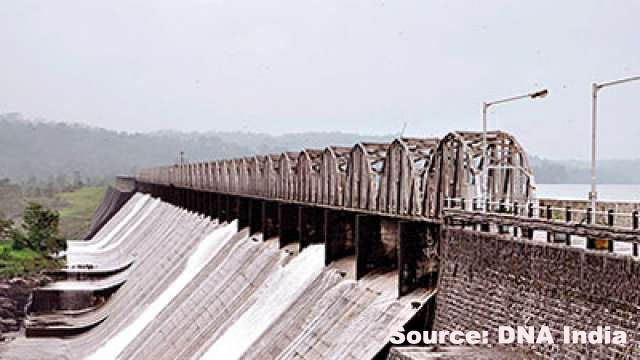
The height of the dam above the lowest foundation is 41 m (135 ft) while the length is 2,804 m (9,199 ft). The volume content is 2,670 km3 (640 cu mi) and gross storage capacity is 208,700.00 km3 (50,069.79 cu mi)
Update on water levels in various lakes and dams of Mumbai


